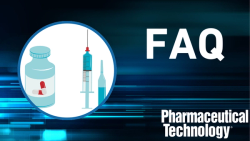
OR WAIT null SECS
- About Us
- Advertise
- Contact Us
- Editorial Info
- Editorial Advisory Board
- Do Not Sell My Personal Information
- Privacy Policy
- Terms and Conditions
© 2026 MJH Life Sciences™ , Pharmaceutical Technology - Pharma News and Development Insights. All rights reserved.
Assessing Antibody-Dependent Cell-Mediated Cytotoxicity
The reporter bioassay, used to evaluate ADCC activity of therapeutic antibodies, complements the classical ADCC assay.
Antibody-dependent cell-mediated cytotoxicity (ADCC) is an important mechanism of action through which monoclonal antibodies (mAbs) exert their therapeutic effect, particularly in cancer targeting. The ADCC activity of these antibodies is often assessed using in-vitro assays. Pharmaceutical Technology spoke to Catriona Thomson, PhD, director of R&D and Technical Services at Sartorius Stedim BioOutsource, about the challenges of developing and validating an ADCC methodology, including the difference between the classical ADCC assay and the reporter bioassay.
The classical ADCC assay
PharmTech: What is the principle behind the classical ADCC assay?
Thomson (BioOutsource): ADCC is an immune defense mechanism and is one of the ways in which the body can clear unwanted tissue composed of damaged, cancerous, or infected cells. Host antibodies are able to target these unwanted cells and recruit effector cells of the immune system to initiate a cell death process that ultimately lyses the target cells. Therapeutic antibodies can harness the ADCC activity of the immune system provided that their antigen is expressed on the surface of target cells, and this has been demonstrated with many different molecules.
The in-vitro ADCC assay is designed to mimic the in-vivo environment. An antigen-expressing target cell line is selected and a dilution series of the antibody is added. An effector cell population is then added, and for the classical ADCC assay, many different options have been described. Natural killer cells are the predominant mediators and are most commonly applied within a mixed cell population called PBMCs (peripheral blood mononuclear cell) but may also be used as a purified fraction. The target cells, antibody, and effector cells are then incubated together, and target cell death is measured at the end of the assay.
The challenges and limitations of ADCC assays
PharmTech: Why are ADCC assays so challenging?
Thomson (BioOutsource): Bioassays are amongst the most challenging of analytical methods primarily due to the cells that are used in the ADCC assay. There are two cell types to deal with--the target and effector cells. Most assays use primary effector cells, and in this case, there are limited quantities of cells available from each donor. Designing an assay based upon the response of a single donor would be relatively straightforward, but establishing a robust method that works with different donors presents the biggest challenge. A common observation is that donors tend to provide an excellent response for one antibody but a poor response for another. Moreover, the response we get from cells obtained from repeat donations by the same donor can be influenced by any medication they are receiving or whether or not they have an infection.
PharmTech: What are the problems or limitations associated with the classical ADCC assay?
Thomson (BioOutsource): It is relatively easy to measure the ADCC activity of antibodies that are specifically designed to mediate it--those that possess the optimum glycan composition and have a ready abundance of target cell lines that express high levels of target antigen. The majority of problems arise when studying the activity of antibodies that are highly fucosylated with poor target cell lines because it is difficult to obtain a response of sufficient magnitude, and there is a poor level of signal to noise. When this problem occurs, it affects all aspects of assay performance and can result in high levels of variability. It is, therefore, important to optimize the method and screen for the optimum donors. The standard means of controlling method variability is to increase replication in the assay, but this approach is limited by the finite quantities of effector cells, which poses another challenge.
ADCC reporter bioassay
PharmTech: Can you tell us more about the ADCC reporter bioassay, how does it work and how does it compare with the classical ADCC assay?
Thomson (BioOutsource): The reporter assay uses an engineered cell line in place of effector cells: the cell line stably expresses a specific Fcγ receptor (eg FcγRIIIa (V158)) that, when bound to the Fc region of a target antibody, results in signal transduction and emission of a luminescent signal. The most significant difference is the availability of an unlimited supply of effector cells for the ADCC reporter bioassay, which provides several benefits. As a result, it can deliver a level of consistency that is difficult to achieve in the classical assay. Reporter assays can be developed with better definition of sample concentrations that will aid accuracy and make routine GMP performance far easier. Also, for antibodies that produce a low level of response in the classical assay, the signal can be amplified by increasing the concentrations of the effector cells without causing non-specific cytotoxicity as the endpoint is luminescence, rather than death. These advantages make the assay easier to perform in general and allow laboratories with limited capabilities to obtain primary effector cells to conduct ADCC assessments. The assay design can be simplified and, as a result, deliver greater levels of throughput while always using the same effector cells, thereby removing the consideration of donor bias when interpreting results. Although the reporter assay has a number of distinct advantages, its limitation centers on the fact it does not specifically measure cell death.
ADCC methodology
PharmTech: How do you develop and validate an ADCC methodology?
Thomson (BioOutsource): In general, the standard approach to bioassay development and validation would be adopted with the scope commensurate with the stage of the antibody’s development. The additional considerations for an ADCC assay are associated with the use of primary effector cells--it would be rare to find a method in which every single donor provides a response that would be appropriate for a GMP lot-release method. This variability could be considered as part of robustness, but it is likely that adoption of an extensive donor screening and qualification program with a specification assigned for acceptable donor polymorphisms would be appropriate.
Both development and validation should be planned with foreknowledge of the antibody product’s variability in relation to the expected differences in the glycan composition to understand the performance capabilities of the method and establish the levels of sensitivity.
PharmTech: Why is important to understand the method’s sensitivity?
Thomson (BioOutsource): Without characterizing the method’s sensitivity, conclusions about whether or not the sample is within the specification cannot be drawn with any certainty. The sensitivity of an ADCC method specifically relates to the ability of the method to detect the biological impact of structural differences in the Fc domain--primarily glycans and aggregates--that affect the binding of the antibody to the effector cells. Take a biosimilar for example; if a test reveals no differences from the innovator, is it a true result? Or is the method that has been used insensitive? Conversely, if large differences between a biosimilar and innovator are observed, is the difference meaningful and does it translate to a biological difference, or is it the result of using a highly sensitive method that will detect even the smallest structural difference? Without understanding the sensitivity of the method, it is difficult to interpret the results that are obtained.
ADCC assay performance
PharmTech: What affects the performance of the assay--for example, how does polymorphism affect the results?
Thomson (BioOutsource): It has been long established that polymorphisms in the effector cell population, where a point mutation in the CD16a receptor at amino acid 158 produces low (F/F), intermediate (V/F or F/V), or high (V/V) affinity variants, that impart differing levels of sensitivity to the assay. Here, the most sensitive assays are obtained using donors with the higher affinity polymorphisms. What is becoming increasingly clear is that the degree to which these different polymorphisms affect assay sensitivity is further influenced by the composition of the effector cell population, with purified natural killer cells providing the most sensitive classical assay formats. There is now a delicate balance between establishing assays that are both sensitive and retain the ability to be predictive of the in-vivo outcome.
PharmTech: Can you provide an example of application of the ADCC reporter bioassay in characterizing a therapeutic antibody?
Thomson (BioOutsource): In our experience, the ADCC reporter bioassay can provide one of the most sensitive ADCC assay formats and as such, its application is valuable at all stages of the development of a biosimilar, particularly at the earliest stages of development when clones, media, and processes are established and optimized. The assay’s throughput lends itself nicely to the large number of samples that require analysis at this stage.
Article DetailsPharmaceutical Technology
Vol. 40, No. 2
Pages: 22–23
Citation:
When referring to this article, please cite it as A. Siew, “Assessing Antibody-Dependent Cell-Mediated Cytotoxicity," Pharmaceutical Technology 40 (2) 2016.
Related Content:



